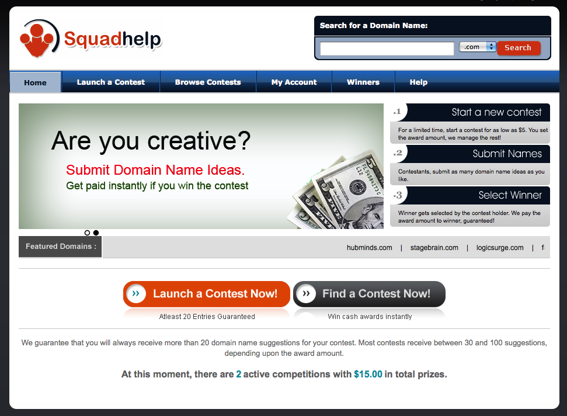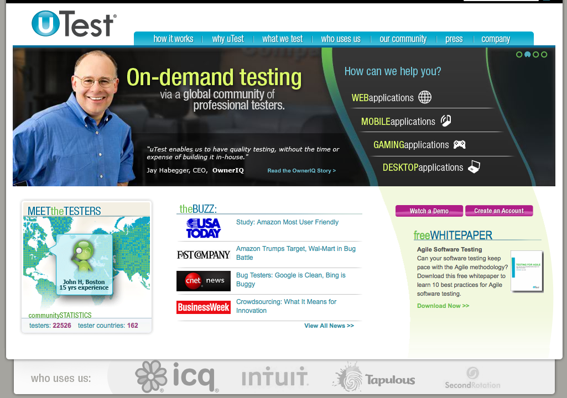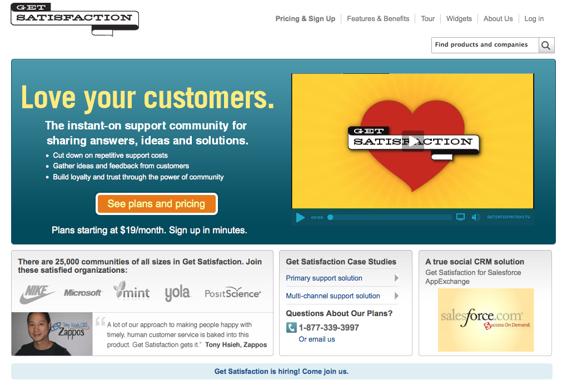If you are running an online business or planning on starting a new one, chances are that you do not have unlimited capital. Yet, in order to succeed in this competitive environment, you realize that you can’t compromise on the quality of your offering. More than likely, you continually balance the needs of your business with a limited amount of resources by making tradeoffs. So, for every hour or dollar that you spend on your business, how do you maximize the mileage from that investment?
Welcome to the world of crowdsourcing. Crowdsourcing taps into the collective intelligence of online communities to complete business-related tasks that a company would normally either perform itself or outsource to a third-party provider. For every investment you make, you should evaluate whether you could have reached a better outcome by crowdsourcing that activity. For those who have not yet discovered the power of crowdsourcing, let’s take a look at why extending your brain to the web makes financial and strategic sense. Here are some crowdsourcing examples that can help you at different stages of your business.
Starting an Online Business
1. Identify a business name.
The journey to any web based business starts with securing a marketable domain name that would represent the brand of your company. However, finding a good domain name is getting more and more difficult these days and every year new startups spend significant amount of time and resources in coming up with a marketable name. That is where Squadhelp.com comes in. You can start a domain name contest for as low as $10 and receive 30-40 domain name suggestions from experts across the globe within hours. Other users have the ability to rate the suggestions and the best suggestion wins the prize amount. Expect to spend $10 – $50 for 30 to 100 domain name suggestions.
Squadhelp home page.
2. Design a logo or website.
Once you have chosen a good name for your venture, you need to start building the user experience and brand identity. Whether it is logo or site design, consider 99designs or crowdSPRING to engage a community of professionals from across the web to deliver quality designs. You set the budget, and designers from across the world will post the designs for your project. You pick the best design, and the winner gets paid. You are likely to spend a fraction of what you would normally pay a design agency for high quality designs. Expect to spend $200 – $1000.
3. Create a marketing pitch, and build your brand.
Do you need help with advertising or marketing? BootB is an online marketplace that allows anyone with access to the Internet to pitch his or her ideas in response to your specific creative needs. Although BootB claims to have customers ranging from small startups to large corporations, I see this as a better fit for companies that are larger in size due to the typical price tag associated with these activities. Expect to spend $800 – $5,000.
4. Software development and programming.
If you are an online retailer, chances are that you are implementing a pre-built shopping cart. However, you will occasionally need to make customization and programming changes to support your online business. Also, in other cases, you might have a need to develop a custom platform, depending upon how unique your offering is. oDesk and Elance are both good options for engaging quality resources for software development. I prefer the flexibility ODesk provides, where you can hire specific resources for different activities. However, Elance is a good option if you have a fairly definitive idea of the project’s scope. In both cases, you can see the ratings of the providers and their past portfolio, so you get a sense of the quality you should expect. You can get a complete online retail platform setup and completely customized for as low as $2,000. Expect to spend $100 for small jobs, and up to $3,000 for a fully customized offering.
Launching a Business
5. Test your website.
Your site has been developed and you are ready to launch. However, it might be a good idea to engage the community of testers who can help find bugs before you go to market. uTest has more than 20,000 testers in more than 150 countries. Testers are paid based on the bugs they find and are rated based on the validity of their bugs. There are forums and metrics that allow testers to gain credibility amongst the community.
For usability testing, I wrote “Top Ten Low Cost Ways to Improve Site Usability” that showcases inexpensive options but UserTesting.com does a good job of engaging the community and providing you feedback on the usability of your site for an affordable rate.
Expect to spend roughly $29 at UserTesting.com, and there’s custom pricing for uTest.com.
uTest home page.
6. Search engine optimization, press releases and other online marketing.
It takes a significant amount of time and effort to write good quality articles about your offering, as well as the ongoing work related to SEO and public-relations-related activities. Instead of spending your own time in performing these activities, you can hire professionals ( from sites such as oDesk) who will do this work at a very low cost to you. Expect to spend $100 to $500 for article writing, press-release writing, and other SEO activities.
Operating a Business
7. Get ideas from the community.
Need to engage your customers in developing new offerings or products for your business? IdeaScale, can help you organize feedback from the crowd regarding old and new products, concepts and service, among other areas. It begins with an idea posted to IdeaScale by a user. Each idea is then expanded by voting and comments from the community. The ultimate measure of an idea is determined by a voting system. Any idea can be voted to the top or buried back down to the bottom. It combines the “wisdom of the crowds” concept with Web 2.0 models like Digg. Expect to spend $15 per month for a basic package.
8. Help with repetitive tasks.
For many simple tasks, particularly if they are small, there are highly granular on-demand work marketplaces. Amazon’s Mechanical Turk allows you to submit small tasks (called HITs) that people across the world can work on. For example, if you are an online retailer and need help with content development (e.g. adding attributes, or tagging your product images), you can post these tasks on Mechanical Turk for as low as 10 to 20 cents per HIT. Expect to spend $0.25 to $1 for simple, repetitive tasks.
9. Customer service help.
Building support/community infrastructure is not a trivial undertaking. The help section, forums, FAQs, and whatever else you have to build to offer comprehensive customer support takes quite a bit of effort. So for those companies that would prefer to build an instant-on, support community for sharing answers, ideas and solutions, GetSatisfaction is a good option.
Expect to spend $19 per month for starter plans.
Get Satisfaction home page.
Conclusion
While it is a relatively new concept, crowdsourcing can offer significant operational and financial benefits while improving the quality of offering and engagement with the customers. Crowdsourcing adds a third dimension to the age old “Buy versus Build” philosophy. Consider crowdsourcing as a serious alternative to utilizing internal resources or outsourcing to third party providers.



